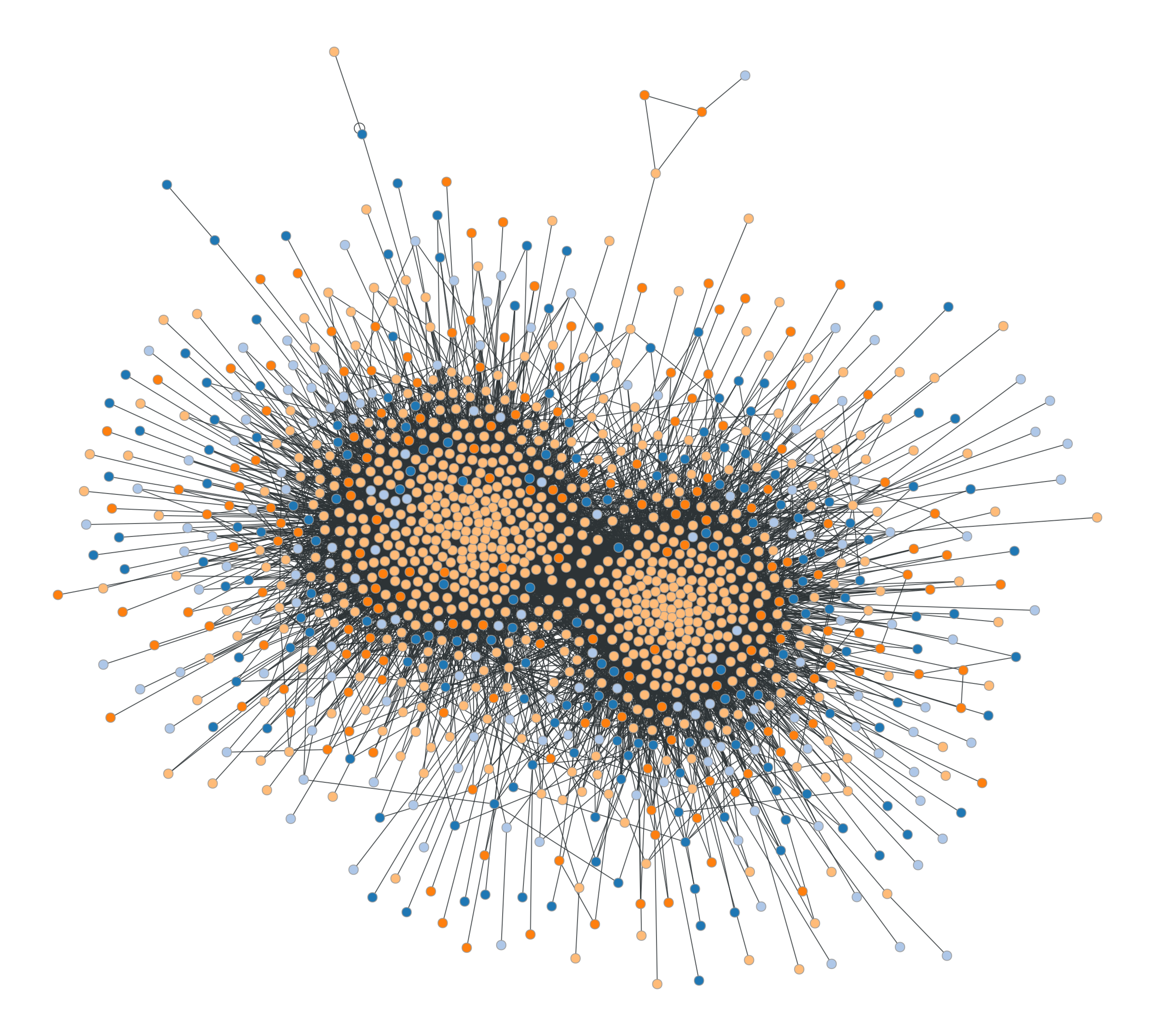graph_tool.dynamics.PottsGlauberState#
- class graph_tool.dynamics.PottsGlauberState(g, f, w=1, h=0, s=None)[source]#
Bases:
DiscreteStateBaseGlauber dynamics of the Potts model.
- Parameters:
- g
Graph Graph to be used for the dynamics
- flist of lists or two-dimensional
numpy.ndarray Matrix of interactions between spin values, of dimension \(q\times q\), where \(q\) is the number of spins.
- w
EdgePropertyMaporfloat(optional, default:1.) Edge interaction strength. If a scalar is provided, it’s used for all edges.
- h
VertexPropertyMapor iterable orfloat(optional, default:0.) Vertex local field. If an iterable is provided, it will be used as the field for all vertices. If a scalar is provided, it will be used for all spins values and vertices.
- s
VertexPropertyMap(optional, default:None) Initial global state. If not provided, a random state will be chosen.
- g
Notes
This implements the Glauber dynamics of the Potts model [potts-model] on a network.
If a node \(i\) is updated at time \(t\), the transition to state \(s_i(t+1) \in \{0,\dots,q-1\}\) is done with probability
\[P(s_i(t+1)|\boldsymbol s(t)) \propto \exp\left(\sum_jA_{ij}w_{ij}f_{s_i(t+1), s_j(t)} + h^{(i)}_{s_i(t+1)}\right)\]References
Examples
>>> g = gt.GraphView(gt.collection.data["polblogs"].copy(), directed=False) >>> gt.remove_parallel_edges(g) >>> g = gt.extract_largest_component(g, prune=True) >>> f = np.eye(4) * 0.1 >>> state = gt.PottsGlauberState(g, f) >>> ret = state.iterate_async(niter=1000 * g.num_vertices()) >>> gt.graph_draw(g, g.vp.pos, vertex_fill_color=state.s, ... output="glauber-potts.pdf") <...>

State of a Glauber Potts dynamics with \(q=4\) on a political blog network.#
Methods
copy()Return a copy of the state.
Returns list of "active" nodes, for states where this concept is used.
Returns the internal
VertexPropertyMapwith the current state.iterate_async([niter])Updates nodes asynchronously (i.e. single vertex chosen randomly), niter number of times.
iterate_sync([niter])Updates nodes synchronously (i.e. a full "sweep" of all nodes in parallel), niter number of times.
Resets list of "active" nodes, for states where this concept is used.
- copy()#
Return a copy of the state.
- get_active()#
Returns list of “active” nodes, for states where this concept is used.
- get_state()#
Returns the internal
VertexPropertyMapwith the current state.
- iterate_async(niter=1)#
Updates nodes asynchronously (i.e. single vertex chosen randomly), niter number of times. This function returns the number of nodes that changed state.
- iterate_sync(niter=1)#
Updates nodes synchronously (i.e. a full “sweep” of all nodes in parallel), niter number of times. This function returns the number of nodes that changed state.
If enabled during compilation, this algorithm runs in parallel (i.e. using more than one thread.)
- reset_active()#
Resets list of “active” nodes, for states where this concept is used.